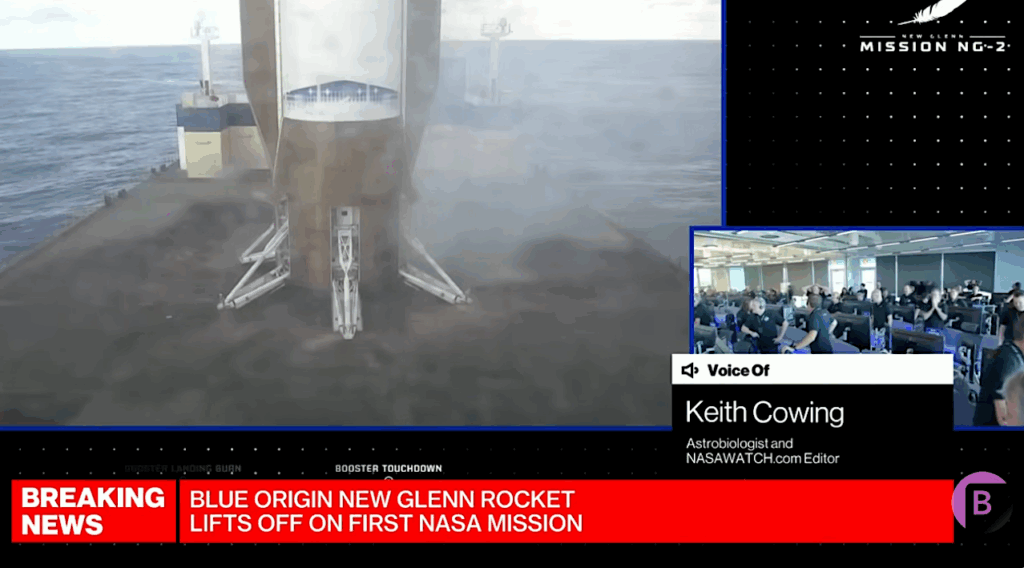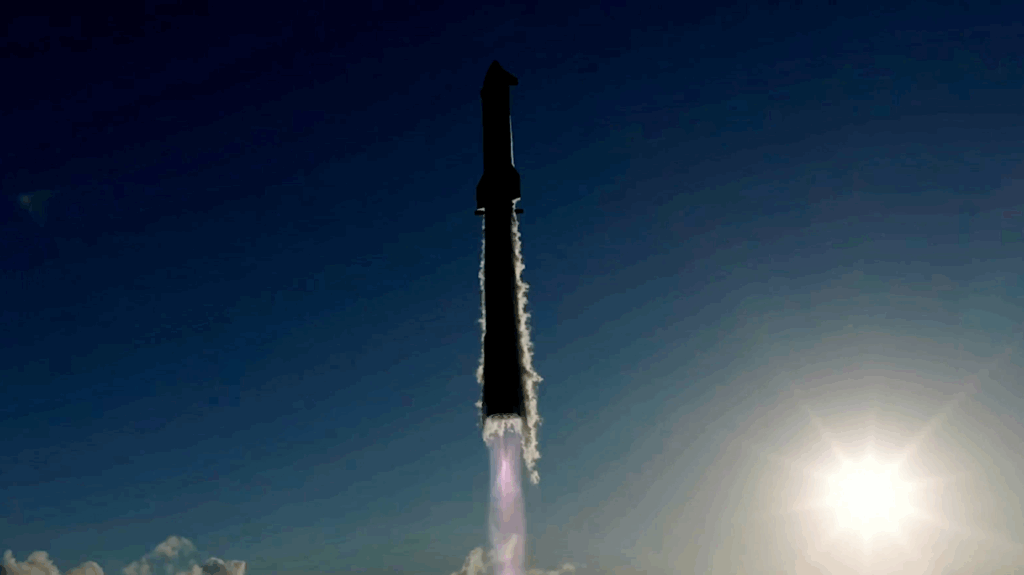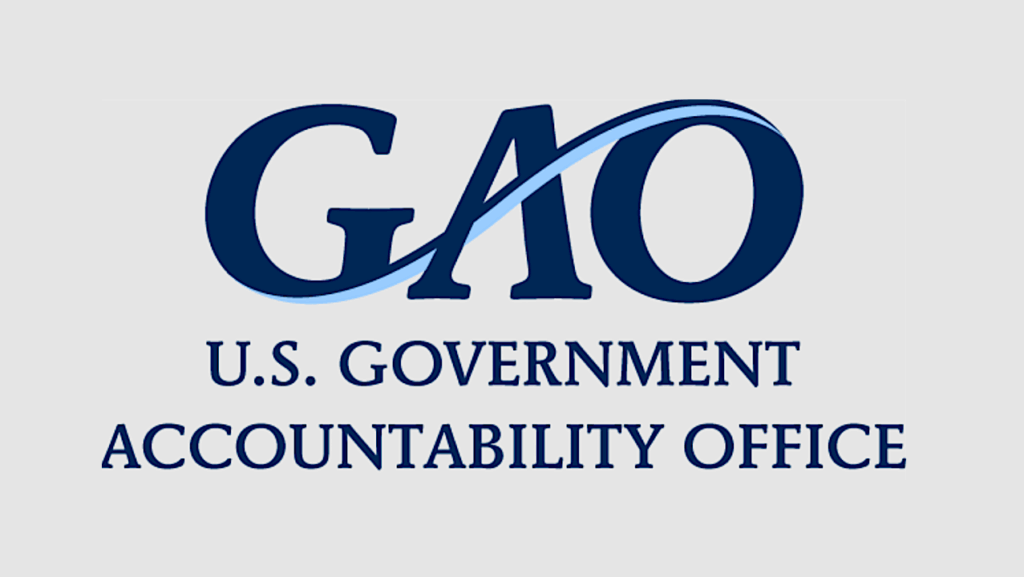Alternative Facts And Snake Oil From The SLS Mafia

If you think NASA is frustrated with SpaceX, you’re probably right, Ars Technica
“A more blunt assessment was offered by Mary Lynne Dittmar, who is familiar with the thinking of NASA’s human spaceflight program managers. “I find it extraordinary that these sorts of announcements are being made when SpaceX has yet to get crew from the ground to low-Earth orbit,” she told The New York Times. Dittmar serves as executive director of the Coalition for Deep Space Exploration, the organization formed by the principal contractors behind NASA’s SLS rocket and Orion spacecraft. These are the old-guard aerospace firms, including Boeing and Lockheed Martin, whose government contracts are threatened by SpaceX. Orion, in particular, appears to be particularly vulnerable if SpaceX can show that Dragon is capable of performing the same kind of deep space missions and high velocity returns from the Moon. With his latest proposal, Elon Musk is playing a dangerous, but potentially winning, game with his lower-cost alternatives to NASA’s existing programs. He recognizes that NASA has nurtured his company, and on Monday night, he remained publicly appreciative of the space agency. However by talking about Mars and now the Moon, he not only indicates that his company isn’t entirely focused on its most important contract – commercial crew- but also is making a play for NASA’s future deep space exploration plans.”
 Keith’s note: FYI The Coalition for Deep Space Exploration is not an “organization”. It is not incorporated anywhere. Dittmar is paid with funds that come directly from these aerospace companies. It is hypocritical in the extreme for her to criticize SpaceX for having not done things when in fact SLS has never flown and a stripped-down Orion test article flew just once on a rocket that it will never fly on again.
Keith’s note: FYI The Coalition for Deep Space Exploration is not an “organization”. It is not incorporated anywhere. Dittmar is paid with funds that come directly from these aerospace companies. It is hypocritical in the extreme for her to criticize SpaceX for having not done things when in fact SLS has never flown and a stripped-down Orion test article flew just once on a rocket that it will never fly on again.
Meanwhile, Dragons launched on Falcon 9 rockets have made multiple visits to ISS and Falcon Heavy, composed of three of those Falcon 9’s, has a significant flight record and is slated to launch this year – years ahead of SLS. SLS will fly only once every several years until the middle of the next decade – and only once or twice a year after that. Meanwhile Falcon 9s will soon be flying monthly. NASA studies looking at moving a crew onto EM-1 will soon show just how expensive and inflexible SLS/Orion actually is while the Falcon/Dragon product line continues to expand its capability without the ever-increasing costs that plague SLS/Orion.
No one is going to get (back) to the Moon fueled with alternative facts and snake oil.









I’m getting the distinct feeling that Trump..
a). Wants someone to get the US to the Moon and Mars
b). Wants it done before 2026
Which option looks more likely to happen? Throwing money to Elon or to NASA?
2026? I’m thinking 2020, just in time for the election.
I think 2020 for Elon’s little Moon trip. I think Mars would be 2026.
At first blush, criticizing the lead time for Mr. Musk’s event around the moon appears legitimate.
But a flight around the moon is far more than- well, more than the flight. Indeed taken as a whole, the campaign will be years long, even if the equipment is actually operating.
It means that SpaceX and NASA will be occupied at least in part with this flight event starting now. To that extent at least the announcement seems appropriate.
Seems to me, there’s more than one type of make oil out there; after deriding the potential launch of the the Orion capsule on the first SLS as a redundant and risky stunt, now the SLS haters are all agog at the prospect of a Dragon capsule doing a free return trajectory around the moon.
While its actually great if a cislunar tourist market is beginning to emerge, the requirements for SLS and Orion are so different than what Dragon has been designed to do, its like comparing a bumper car at a theme park to a full fledged sedan. And the costs for the NASA exploration systems are, just like the ISS, high mostly because we ate trickle funding them; if Apollo had been funded by OMB at the same rate to the requirement as Orion, we still would not have landed on the moon and each capsule would have cost billions of dollars!
The problem is, all of those theoretical capabilities that Orion has designed into it came from requirements pulled out of thin air. Orion still has no actual destination, mission, or purpose from which to glean actual hard requirements.
Put another way, Orion is a very capable tool that is still in search of a job to do.
Having a capable, flexible tool is exactly what’s needed – not a point design. Besides being designed for re-entry at earth escape velocity, 21 days of crewed flight and 6 months of unscrewed storage, Orion can be upgraded; it will likely serve as the return vehicle from future lunar and Mars missions.
Orion doesn’t have a mission because it survived the Obama Administration due to Congressional intercession; it’s problem isn’t that it can’t support multiple missions, it’s that our political leadership hasn’t been able to agree on one.
Hopefully, in his drive to make America great again, Trump will identify that next step – I’m betting on the moon – and the Republican Congress will support him.
I respectfully disagree. Any “deep space” mission worth doing is going to need far more than 21 days of life support. So, you’re going to need a HAB module for the crew to live and sleep in. So, the much shorter life support capability of Dragon 2 is really not an issue.
As for “re-entry at earth escape velocity”, Dragon 2 can do the same. SpaceX is using PICA-X a version of the PICA heat shield material that NASA developed and used on the Stardust mission.
So what can this “flexible tool” called Orion do that Dragon V2 can’t that is truly *necessary* for a “deep space” mission?
I’m not too sure about the whole concept of a “flexible tool.” Flexibility is a great thing, if it is done right. But, as a user, a Swiss Army knife isn’t so great. If you fold out the knife blade and try to use it as a knife, the grip sucks and the blade is likely to fold back and cut your fingers. The saw and the corkscrew are massively un-ergonomicical. One tool to do ten different things can easily mean one tool to do really bad job of ten tasks.
Seems to me the Apollo capsule & service module – designed to support the lunar mission -did a pretty good job of supporting Skylab and the Apollo Soyuz Test – even though they were never contemplated in the original requirements. Comparing to the Swiss Army knife is a bit like saying Apollo should have been able to serve as a car and an airplane as well.
Actually, I’d say ASTP and Skylab were within the original design requirements for the Apollo CSM. The lunar program required testing of the Apollo hardware in low Earth orbit, so it was designed to operate there (e.g. no star trackers getting confused by the Earth blocking half the sky.) The ability to dock with another spacecraft was inherent to the lunar mission architecture. I guess the Skylab missions involved longer on-orbit storage than the original requirements called for, but that’s not a tremendous delta.
Actually dragon (the first version) was designed for 2 years in space without a crew. Orion’s life support system is still being designed and tested. Dragon does need some slight(preplanned) upgrades (for deep space communication). Elon over designed the dragon because he was interested in Mars.
The things Orion has over Dragon are greater delta V in the propulsion system (but less than Apollo). Greater crew capacity on a deep space mission and maybe longer duration(without a mission module). Dragon on the other hand is in theory reusable.
Actually, Apollo needed modifications to do those missions. It used rolling the spacecraft for thermal management and its fuel cells would have been out of power on the Skylab missions after 3 days.
It also massed too much for the Saturn 1B to lift to Orbit if the service module were fully fueled(and likewise the tanks for the fuel cells were also shorted). They painted one side of the capsule so that it could control temperature without rolling. Added a battery (after Apollo 13 as back up) but also used for power at the end of a Skylab mission. It was lifted short fueled (and there were plans for a LEO) version of Apollo with less heat shield and a smaller service module.
The problem with Orion/SLS is that is costs far too much for any additional capacity it brings.
Which one of those requirements is unique to Orion? You previously stated that Orion was designed to more difficult requirements than Dragon 2. That’s not reentry speed, duration of flight (with crew) or storage time. Potential for upgrades isn’t something I’ve seen discussed for either. Where are the stiffer requirements?
I’m not aware of Dragon 2 being designed for Deep Space missions – it would certainly be an unnecessary expense for a commercial system competing on cost for an ISS crew contract. So, for instance, does it have the right kind of CO2 removal system to last 21 days with four astronauts? Is its communications system designed to use the Deep Space Network and not TDRSS which only works below GEO? is it sufficiently Radiation hardened to last 3 weeks – potentially in the event of a solar flare? (Apollo was not but they were lucky); is its propulsion system robust enough to support a large number of in-space maneuvers? How about pressurized volume; for Orion, its got 691 cubic ft, for Dragon 2, its only 350 – kinda cramped for a three week mission.
Its a great commercial stunt for Dragon 2 to do a quick one way tourism loop around the moon on a free return trajectory and hopefully have some luck with solar flares; to have a real long distance exploration capability takes quite a bit more than what Dragon 2 would be designed to do. Lets stop making simplistic comparisons; Musk’s announcement is probably at the outside limit of what Dragon 2 can do; for Orion, it would just be the first crewed test mission.
Well, let’s see.
The Dragon 2 is designed to take seven people to and from ISS. I don’t think SpaceX has published the numbers, but call it three days of consumables. Supporting seven people for three days is the same as supporting three people for seven days. The carbon dioxide scrubbers and other consumables shouldn’t be a problem. The planned trip is about a week long, not 21 days. If you want to argue for a 21 day requirement, you’ll have to come up with a useful reason for a 21-day mission.
They are planning on sending an unmanned Dragon to Mars, and if the electronics shouldn’t have a problem with the radiation dose from a week in deep space. The people might be a different matter, but, as far as I know, Orion doesn’t provide much in the way of shielding either.
For internal volume, as you noted, the Dragon 2 has 350 cubic feet. The Apollo command module, demonstrably adequate for three people and one week, was only 210 cubic feet.
When it comes to in-space propulsion, how many maneuvers are you thinking of? They shouldn’t need more than four (assuming injection to a lunary transfer orbit by the launch vehicle.) That’s something Draco and SuperDraco engines are capable of.
And in terms of communications, are you serious? That’s a radio. Yes, you might have to change the frequency, and give the DSN things like framing and error correction protocols. But it’s a radio. And the spacecraft would be less than a million kilometers away. You can close that link with a coat hanger.
1) Orion capsule carrying crew on its 1st flight in crew configuration, 2nd flight ever, on the 1st flight of the man-rated upper-stage, on the 2nd flight of the SLS lower stack.
2) An uprated version of the Dragon capsule, on its 4th flight in the Crew configuration, 20th flight overall, carried on the 4th flight of Falcon Heavy stack and the 70th flight of the upper-stage and core-stages (15th-20th or so in the final configuration.)
One of these things is not like the other, one of these things is not quite the same.
True -although nearly every SpaceX launch seems to be slightly different than the last. The good thing is this leads to faster evolution, the bad news is, it leads to a loss of configuration continuity between each version.
But I take your point – clearly there will be more history behind the Dragon moon trip than an Orion launch though part of my original concern was the apparent condescending approach towards a lunar fly by since it had already been done.
There have been four versions of F9. With the fifth and final version due by the end of this year. And as I said, the cores will have had 15-20 flights of that version by the time of the lunar flight.
SLS/Orion is a $3b/yr development that will fly four times over its first ten years of operation. Or $7.5b per flight, not including 8 years of prior development, nor the work on Orion under Constellation, just EM-1 to EM-4.
SpaceX’s lunar flight would be a commercial flight costing around $300m at most, paid for by a couple of rich prats.
It’s hardly a double standard to mock the former as a dead end, while praising the latter as a sign of a new age in spaceflight.
Musk could host cocktail parties in orbit from which to observe the first few SLS launch attempts. Dittmar can be a guest providing color commentary.
Officially, the SpaceX announcement of private citizens using the crew capability developed in partnership with NASA is mostly consistent with NASA’s concept for public private partnerships. If anything, having private space travel was baked into the commercial crew procurement / investment concept, and lack of such business would be a programmatic failing. Notably Boeing was criticized years ago for some commercial crew program managers saying they did not see a market.
I’ve always hated the way media treat these fictional organisations, “institutions”, “centres”, “coalitions”, as if they are real things.
Don’t get me wrong, there are genuine lobby groups and independent organisations that allow groups of individuals to pool their resources. But so many of these groups are created by other large organisations/corporations that already have their own extensive direct PR and lobbying efforts, purely to create the pretence of independent lobbying. And the media, present company excepted, doesn’t call them on it. (To the point where they obviously don’t even go to the effort of registering the fake organisations any more.)
The author of the Ars Tech article at least makes a token effort to point out that the “Coalition for Deep Space Exploration” is purely funded by the primary SLS contractors. Most reporters don’t even make that effort.
But Berger still used her name and her fake title and name of her fake organisation, as if she was anything other than a spokesperson for Boeing and Lockheed.
Dr Dittmar is not an “executive director” for, nor does she even work for, “CDSE”. She is a private PR consultant (Dittmar & Associates) who gets directly hired by companies like Boeing/LM to do PR. She is speaking directly on behalf of her clients (or else trying to shill for work for her PR consultancy, which is surely not news.)
“A spokesperson for Boeing and Lockheed claimed…” Because that’s all she was, a nameless spokesperson regurgitating a prepared line for her bosses. (And I’m guessing that much of the motivation and information in Berger’s article came from Dittmar. In spite of his claim to “have some pretty good contacts high in NASA’s administration who speak to me privately”, Dittmar was the only person quoted.)
I don’t like the practice, but there are occasionally valid reasons to have these daughter organizations for tax purposes. Many sorts of tax-exempt organizations are legally prohibited from lobbying. There is, however, nothing illegal about setting up a separate organization with the same membership, which does lobby and pay taxes. That doesn’t apply in this case, but it is a reason why such organizations aren’t automatically dismissed.
I want to sharpen the fuzzy focus of this picture by simply saying that SpaceX already has all the pieces they need to do a manned cislunar flight now , and all of those pieces are more or less flight tested. Touching off an F9 from Pad 39-A was the last component , and presuming the Falcon Heavy is good to go based on it’s long engineering merits, the vehicle is standing ready. For a passenger manifest of two persons for a weeklong voyage , all that’s needed are a pair of His-Her working suits, the environmental life support system , and the zero-G potty – which are well along in development, probably prototyped already . Outfit a Dragon , add the 25 pound wheel of cheese and case of champagne , a well stocked cooler, and the trip for two to the Moon is manifest. Sure, it will undoubtedly involve a water landing , but that just completes the Quadrille Moondance : Earth-Sky-Space-Ocean.
NASA , Boeing et al are nowhere near having flight proven hardware. SLS – Orion is almost two years away from first flight and is hideously expensive on the taxpayer dime . SpaceX has been pointed squarely at LEO, the Moon and Mars since Falcon 1 days and already has the means of conveyance on the shop floor. They also have something the federal bureaucrats and the aerospace corporations do not: A sense of adventure and willingness to take risks. That counts for a lot.
SpaceX is short of one thing. Slots in their very crowded launch schedule for a reasonable number of test flights. I’d like to squeeze in a duration test of the life support system and a faster-than-LEO reentry (ideally on separate flights). I think they already have adequate unmanned Falcon Heavy launches manafested (my standard would be two successful ones before flying people.)
It’s my understanding they plan to reactivate Cx-40 and so have two pads for Easterly launches, and so may be able to increase their East Coast launch rate. The site in Texas is another possibility. However someone would have to provide funding for these test flights.
I really hope SpaceX will have two launch sites in Florida and another in Texas. But they currently have one, and they currently have a big backlog. I’m not too worried about the technical risks of the lunar mission, but the scheduling issues concern me.
With that in mind, there is an under-reported issue. The last SpaceX launch was a first for range safety. The activation of the “off course so blow it up” explosives were automatically controled by the launch vehicle, rather than being controlled from the ground, based on camera and radar tracking. That eliminates several days of work between launches, to “reconfigure the range.” That should help with frequent launches.
“However someone would have to provide funding for these test flights.”
That’s a good point. In theory Elon could have baked this into whatever price was quoted to the two billionaires. However my guess is that he is willing to take something of a loss on this project, happy to be receiving a sizeable subsidy for development from the paying customers.
One way or another, he needs the FH in operational status ASAP to compete with Ariane and Delta Heavy for the larger payloads to GEO.
Regarding Complex 40, the damage is not as great as might appear from the videos of the explosion and fire, Getting LC-39A ready was a higher priority, but I would expect repairing Cx-40 will not be as lengthy a process as it was for the OSC pad at Wallops Island. Manufacturing and processing capabilities may be more limiting than the number of pads per se. In one picture the HIB appears to be full of returned boosters, for example.
SpaceX’s SLC-40 will be repaired and back to operational within a few weeks. In fact, one of the other space websites is reporting that SES-10 set for a March 12 launch is from SLC-40 ( on the first recovered refurbished and reflown Falcon 9 booster)
Now if we can only get the Air Force Eastern Test Range to upgrade their antiquated vaccuum tube range radars along the way to adopting the GPS automatic flight termination system , to pick up the launch rate. SpaceX would like to fly every three weeks going forward , but too often they have to wait on the Air Force or the FAA bureaucrats to get a green light.
Where do they get the vacuum tubes? I thought radars for civil aviation converted years ago, after a brief period of buying surplus Russian parts. Does anyone actually manufacture vacuum tubes in the late 2010s?
A brief search turned up quite a few sources, but they seem to be mostly for audio tubes like the good old 6L6 — like this source:
https://vacuumtubesinc.com/
Obtaining klystrons, such as I assume the radar equipment uses, might be more difficult.
6L6! That brings back some great memories of forcing that critter to serve as an RF final in a low power transmitter.
I’ve had a ham license for many decades. When I was younger I did a lot of experimenting – but nowadays, the transceivers you buy have far more capabilities than anything I could build. It’s more about antennas and on-air skill these days.
Oh well.
I miss the smell of solder in the shack, though.
I was speaking more metaphorically about ‘ vaccuum tubes’ as the benchmark for dating the aging USAF tech behind the Eastern Test Range. I have no idea what those Cold War-era radars actually run on , but I’ll go with ” klystron ” because it’s a good Scrabble word. I just recall reading scattered reports over the years that the Air Force range technology in and near Canaveral is woefully behind the times, due to underfunding. Maybe some body close to Trump ( you listening Elon? ) could get his ear to do some serious up-appropriation of dollars to USAF to update the rocket range. Just look at the great over-the-horizon phased array radar monoliths on the Navy’s Aegis missile cruisers for instance and the X band missile defense eyes…
Hopefully active GPS tracking will replace the requirement for radar.
Many high power radar systems still use vacuum tubes; magnetron, klystron, travelling wave tube and similar high-power amplifiers can provide 50kW or more of transmitted power. These tubes often cost thousands of dollars each, and can easily be ruined if not used properly.
AFAIK solid state hasn’t reached the final stage of high power transmitters in any frequency range, including terrestrial AM. Hams have SSD linear amps in the KW class running in Class A or AB for SSB; class C for FM, RTTY, any constant-envelope mode. Dunno the power limit on SSD though. Vacuum tubes remain a very efficient source of RF.
Those giant tubes used in commercial stations, by the way, are rebuilt after failing.
Fun story: WLW ran a 500,000 watt AM station in the late 1930’s; water cooled. The thing was cranked up and ran again for a few hours to bring in the millennium. Crazy days of AM radio.
Short memories? The President of United States, in an address to a joint session of Congress on May 25, 1961, less than three weeks after the first manned, suborbital mission, said, “I believe that this nation should commit itself to achieving the goal, before this decade is out, of landing a man on the moon and returning him safely to the Earth.”
The launch vehicle to achieve that goal did not exist, except as drawings on cocktail napkins and in MSFC design studies. The vehicles that would be used to establish the feasibility of rendezvous and docking had been in design for only three months, and the vehicle that would get astronauts to the lunar surface from lunar orbit and back, were not past design phase by then (in the case of the LM, probably not for another year).
Get a grip.
True. But a lot has happened since then, not the least of which is the expenditure of massive amounts of dollars, nearly countless person hours of work and no flight hardware to show for it.
Looking at 2017, those boys in 1961 would just shake their heads.
The 5 meter wide Orion Command Module is enormous and very heavy – *thousands* of pounds heavier than the 4 meter Apollo, the 4.5 meter Boeing CST-100 and the 3.7 meter Dragon. I say save the Orion’s actually pretty useful Service Module and use it with an upgraded CST-100 or Dragon for deep space missions. The cost of LockMart’s Orion has been gold-plated, eye-watering stuff as have been some of their other more recent and infamous products!! And replace the magnificent but flawed and *painfully* expensive, slow flight rate SLS with the upcoming ULA Vulcan/ACES and distributed launch.
In fact – with the Falcon Heavy, Vulcan and New Glenn, in a few short years America will have a powerful, partially reusable launch fleet with a regular, projected semi-high launch rate, for billions with a B less than SLS. The U.S. will have a launch fleet that will be the envy of the world; with or without the SLS.